Penang Hill
Tourist Attractions
Penang Hill
Penang Hill is the first colonial hill station established in Malaya by the British. British Government officials and army personnel used it as a retreat from the tropical heat and malaria threat in the lowland areas of the island.
Construction began in the 1790s when a horse trail was carved from the Waterfall Gardens (Penang Botanic Gardens) to the summit of Penang Hill.
Penang Hill comprises several hills: Strawberry Hill, Halliburton’s Hill, Flagstaff Hill, Government Hill, Tiger Hill, and Western Hill. The highest point of the hill range is Western Hill, reaching an altitude of 833m (2,723ft) above sea level. The range also serves as the largest water catchment area on the island, with several tributaries contributing to major rivers in Penang. The main attraction and the most convenient way to ascend to the summit is by riding the iconic Penang Hill funicular train!
Visitors can enjoy the best panoramic view of GeorgeTown and other urban areas on the eastern coast of Penang Island. Penang Hill’s cooler climate, with an average temperature of 21°C (69.8°F), was a significant factor in establishing the hill resort.
Funicular Train
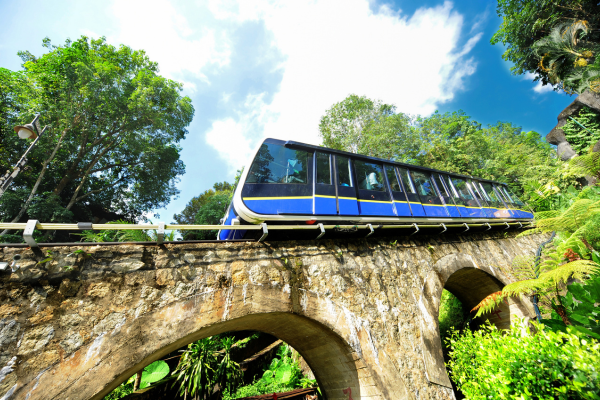
The Penang Hill funicular railway is considered the most convenient means of reaching Penang Hill, connecting the lower station in Air Itam to the upper station on Flagstaff Hill (Bukit Bendera in Malay).
An experimental funicular train was invented in 1905 but was not put into service due to limitations in mechanical expertise at the time.
In 1923, the first generation of the funicular was successfully designed and completed, and it was officially launched to the public on 1st January 1924 by Sir L. N. Guillemard, the Governor of the Straits Settlements.
Over its 54 years of service until 1977, numerous modifications and improvements were carried out on the first generation of the funicular train.
The second generation of the funicular was then introduced, serving for another 43 years until the third generation was introduced in 2011.
In 2023, the Penang Hill funicular service will celebrate its 100th year, making it the only available funicular service in Malaysia. The Penang Hill Corporation continues to make significant efforts to enhance and maintain the operation of the train.
During the early evolution period of the funicular train, the 1.996 km journey used to take approximately half an hour, and the train could make a stop at the middle station upon request.
Thanks to the unremitting efforts of the Penang Hill Corporation (PHC), the upgraded third generation of the funicular train now takes passengers non-stop to the top of Penang Hill in five to ten minutes.
Hiking Trails
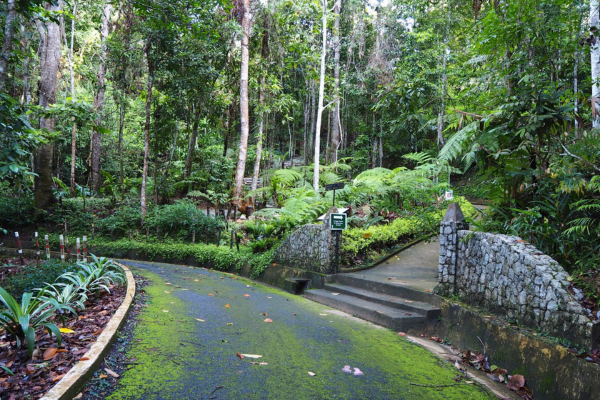
There are 26 trail entrances linking various hiking trails, including popular rest stops along an extensive network of pathways interconnected with Penang Botanic Gardens, Tiger Hill, Air Itam Dam, Teluk Bahang Dam, and the Penang National Park.
The longest cross-island forest trail begins at Taman Rimba (Teluk Bahang Recreational Park) and ends at Penang Hill’s Upper Station. Nature enthusiasts can immerse themselves in an authentic, diverse, and educational Malaysian natural rainforest experience through hiking, with Penang Hill at the heart of it all.
Edgecliff
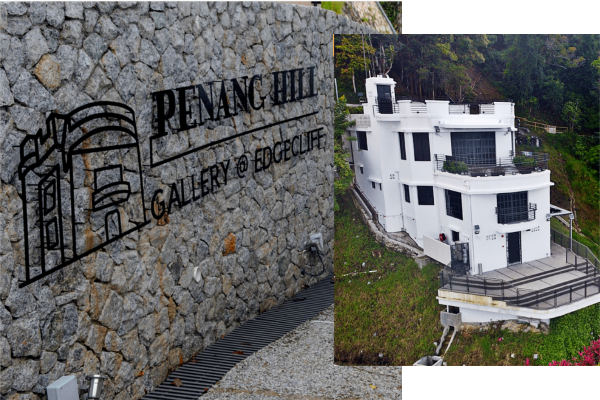
Edgecliff Bungalow (originally Braeside) was built in 1937 by Scottish architect J.C. Miller (1901-1988).
The bungalow, perched on a cliff, is best described as a “box-like house” that showcases the Art Deco building aesthetic known for its streamlined and stylized forms.
The building was recognized as a contemporary modern architectural design during its time.
The rooftop offers a spectacular 270-degree view of the Penang Straits, encompassing Penang Port, George Town, and Bayan Lepas (Penang International Airport).
On Penang Hill, Miller designed three houses: Treetops (1929), Nook (1929, now in ruins), and his own home (Edgecliff Bungalow). He left Penang in 1939 before WWII and never returned. Since 1939, Edgecliff has served as a guest house under the Penang State Government’s authorization.
The Penang State Government and Penang Hill Corporation have successfully restored and reintroduced Edgecliff Bungalow at Penang Hill Gallery@Edgecliff. The heritage building and its components are carefully preserved and conserved to retain its originality, historical character, personality, and identity.
Penang Hill Gallery@Edgecliff aims to engage international visitors, particularly rail fans (train enthusiasts), art lovers, history buffs, researchers, and academicians.
The gallery emulates green practices and is the first project in Malaysia to obtain the Non-Residential Existing Building (NREB): Historic Building Tool certification from the Green Building Index.
The Habitat Penang Hills
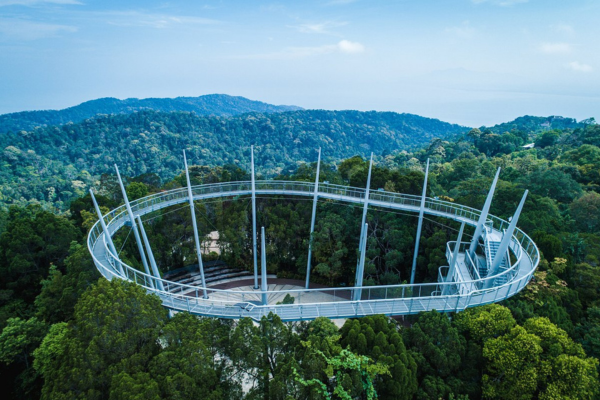
Edgecliff Bungalow (originally Braeside) was built in 1937 by Scottish architect J.C. Miller (1901-1988).
The bungalow, perched on a cliff, is best described as a “box-like house” that showcases the Art Deco building aesthetic known for its streamlined and stylized forms.
The building was recognized as a contemporary modern architectural design during its time.
The rooftop offers a spectacular 270-degree view of the Penang Straits, encompassing Penang Port, George Town, and Bayan Lepas (Penang International Airport).
On Penang Hill, Miller designed three houses: Treetops (1929), Nook (1929, now in ruins), and his own home (Edgecliff Bungalow). He left Penang in 1939 before WWII and never returned. Since 1939, Edgecliff has served as a guest house under the Penang State Government’s authorization.
The Penang State Government and Penang Hill Corporation have successfully restored and reintroduced Edgecliff Bungalow at Penang Hill Gallery@Edgecliff. The heritage building and its components are carefully preserved and conserved to retain its originality, historical character, personality, and identity.
Penang Hill Gallery@Edgecliff aims to engage international visitors, particularly rail fans (train enthusiasts), art lovers, history buffs, researchers, and academicians.
The gallery emulates green practices and is the first project in Malaysia to obtain the Non-Residential Existing Building (NREB): Historic Building Tool certification from the Green Building Index.
NatureWalk
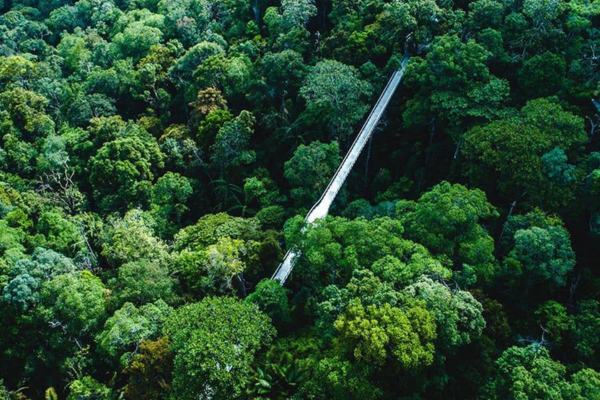
NatureWalks @ Penang Hill offers visitors the opportunity to embark on self-guided walks along three intriguing bypaths, taking them through nature trails and steps to reach the summit of the Hill.
Alternatively, visitors can join free guided nature and heritage walks led by volunteer guides who offer unique rainforest experiences and personal insights into the Hill.
These guided walks are free on weekends, public holidays, and school holidays. They are open to individual walk-in visitors, and while tipping to show appreciation is welcome, it is not mandatory.
The Nature Walk service (by a private operator), is an initiative of Penang Hill Corporation, with the mission to encourage visitors to explore and discover more of the Hill.
Tourist Attractions
Penang Hill
Penang Hill is the first hill station established in Malaya by the British. British Government officials and army personnel used it as a retreat from the tropical heat and malaria threat in the lowland areas of the island.
Construction began in the 1790s when a horse trail was carved from the Waterfall Gardens (Penang Botanic Gardens) to the summit of Penang Hill.
Penang Hill comprises several hills: Strawberry Hill, Halliburton’s Hill, Flagstaff Hill, Government Hill, Tiger Hill, and Western Hill. The highest point of the hill range is Western Hill, reaching an altitude of 833m (2,723ft) above sea level. The range also serves as the largest water catchment area on the island, with several tributaries contributing to major rivers in Penang. The main attraction and the most convenient way to ascend to the summit is by riding the iconic Penang Hill funicular train!
Visitors can enjoy the best panoramic view of George Town and other urban areas on the eastern coast of Penang Island. Penang Hill’s cooler climate, with an average temperature of 21°C (69.8°F), was a significant factor in establishing the hill resort.
Funicular Train

The Penang Hill funicular railway is considered the most convenient means of reaching Penang Hill, connecting the lower station in Air Itam to the upper station on Flagstaff Hill (Bukit Bendera in Malay).
An experimental funicular train was invented in 1905 but was not put into service due to limitations in mechanical expertise at the time.
In 1923, the first generation of the funicular was successfully designed and completed, and it was officially launched to the public on 1st January 1924 by Sir L. N. Guillemard, the Governor of the Straits Settlements.
Over its 54 years of service until 1977, numerous modifications and improvements were carried out on the first generation of the funicular train.
The second generation of the funicular was then introduced, serving for another 43 years until the third generation was introduced in 2011.
In 2023, the Penang Hill funicular service celebrates its 100th year, making it the only available funicular service in Malaysia. The Penang Hill Corporation continues to make significant efforts to enhance and maintain the operation of the train.
During the early evolution period of the funicular train, the 1.996 km journey used to take approximately half an hour, and the train could make a stop at the middle station upon request.
Thanks to the unremitting efforts of the Penang Hill Corporation (PHC), the upgraded third generation of the funicular train now takes passengers non-stop to the top of Penang Hill in five to ten minutes.
Hiking Trails

There are more than 26 trail entrances linking various hiking trails, including popular rest stops along an extensive network of pathways interconnected with Penang Botanic Gardens, Tiger Hill, Air Itam Dam, Teluk Bahang Dam, and the Penang National Park.
The longest cross-island forest trail begins at Taman Rimba (Teluk Bahang Recreational Park) and ends at Penang Hill’s Upper Station. Nature enthusiasts can immerse themselves in an authentic, diverse, and educational Malaysian natural rainforest experience through hiking with Penang Hill at the heart of it all.

Edgecliff Bungalow (originally Braeside) was built in 1937 by Scottish architect J.C. Miller (1901-1988).
The bungalow, perched on a cliff, is best described as a “box-like house” that showcases the Art Deco building aesthetic known for its streamlined and stylized forms.
The building was recognized as a contemporary modern architectural design during its time.
The rooftop offers a spectacular 270-degree view of the Penang Straits, encompassing Penang Port, George Town, and Bayan Lepas (Penang International Airport).
On Penang Hill, Miller designed three houses: Treetops (1929), Nook (1929, now in ruins), and his own home (Edgecliff Bungalow). He left Penang in 1939 before WWII and never returned. Since 1939, Edgecliff has served as a guest house under the Penang State Government’s authorization.
The Penang State Government and Penang Hill Corporation have successfully restored and reintroduced Edgecliff Bungalow as Penang Hill Gallery@Edgecliff. The heritage building and its components are carefully preserved and conserved to retain its originality, historical character, personality, and identity.
Penang Hill Gallery@Edgecliff aims to engage international visitors, particularly rail fans (train enthusiasts), art lovers, history buffs, researchers, and academicians.
The gallery emulates green practices and is the first project in Malaysia to obtain the Non-Residential Existing Building (NREB): Historic Building Tool certification from the Green Building Index (GBI).

The Habitat Penang Hill is a B Corp Certified, award-winning rainforest discovery center that offers the most authentic, diverse, and educational Malaysian rainforest experience.
Nestled atop Penang Hill, this beautiful nature reserve and world class eco-tourism destination is a must-visit for nature enthusiasts and adventure seekers.
Visitors can explore well-maintained trails, walk on canopy walkways, and discover the area’s rich biodiversity.
The Habitat is home to a remarkable array of flora and fauna, including rare and endangered species.
At the heart of The Habitat Penang Hill lies the iconic 13-metre high Curtis Crest Tree Top Walk, where visitors can take in the highest 360-degree panoramic views of Penang Island.
It provides visitors with a unique perspective of the forest canopy.
The Habitat Penang Hill promises an unparalleled rainforest adventure that showcases the wonders of Penang’s ecosystem. It’s a destination that guarantees an unforgettable and enlightening journey.
NatureWalks@Penang Hill

NatureWalks@Penang Hill offers visitors the opportunity to embark on self-guided walks along three intriguing bypaths, taking them through nature trails and steps to reach the summit of the Hill.
Alternatively, visitors can join free guided nature and heritage walks led by volunteer guides who offer unique rainforest experiences and personal insights into the Hill.
These guided walks are free on weekends, public holidays, and school holidays. They are open to individual walk-in visitors, and while tipping to show appreciation is welcome, it is not mandatory.
The NatureWalks@Penang Hill service (by a private operator), is an initiative of Penang Hill Corporation, with the mission to encourage visitors to explore and discover more of Penang Hill.
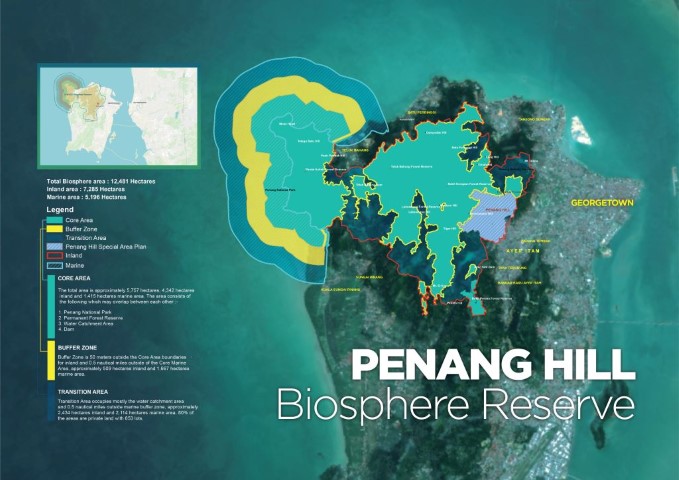
Map & Zonation
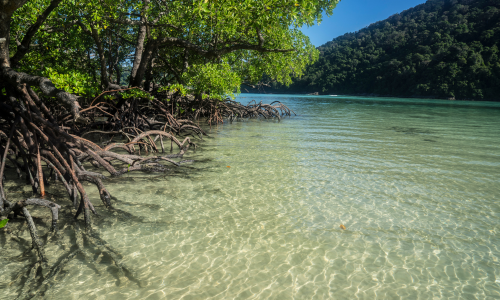
Ecosystem
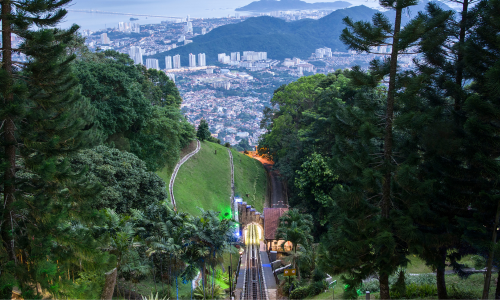
Tourist Attractions

Gallery

Partners
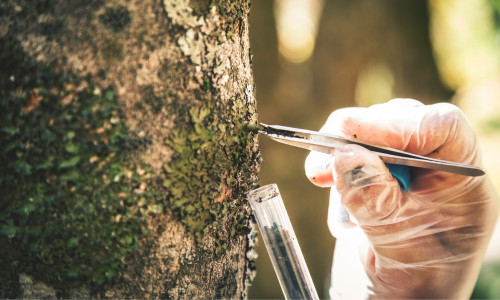
Programmes


